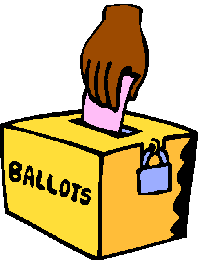
British Columbians won’t be seeing a new electoral system anytime soon. Voters narrowly turned down a change to a single-transferable-vote yesterday, according to the latest figures available. But given the way the referendum was conducted, it’s surprising BC-STV even came close to winning.
When Gordon Campbell campaigned in 2001, he promised voters he would hold two referendums. One would guide how the province negotiated First Nations land claims. The other would allow British Columbians to change the way they vote. The differences between how those referendums were run says a lot about how much the Campbell government wanted the respective measures to pass.
Treaty rights vote
The 2002 referendum on Native treaty rights drew heavy fire from critics from its inception. Church leaders, native groups, and others called it racist, immoral, divisive, and unconstitutional. Many called for a boycott.
The mail-in ballots asked voters eight questions about the principles the government should follow in its treaty negotiations. These were some of the questions:
Hunting, fishing and recreational opportunities on Crown land should be ensured for all British Columbians. (Yes/No)
Parks and protected areas should be maintained for the use and benefit of all British Columbians. (Yes/No)
The existing tax exemptions for Aboriginal people should be phased out. (Yes/No)
The questions were worded to lead voters to answer the way the government wanted. Not surprisingly, more than 80 per cent of voters answered ‘yes’ to all eight of the questions.
Veteran pollster Angus Reid called the referendum, “one of the most amateurish, one-sided attempts to gauge the public will that I have seen in my professional career.” The question of Aboriginal tax exemptions doesn’t even fall under provincial jurisdiction.
The government spent $9 million on that referendum, and then barely mentioned the debacle in the three years since.
‘Deep hibernation’
In contrast, the government spent $5.5 million on the Citizen’s Assembly on Electoral Reform, which came up with the electoral system to be put to referendum. Another $810,000 was spent educating the public on the referendum. That money – and the small amounts spent by the ‘yes’ and ‘no’ campaigns – pales in comparison to the millions spent by the competing political parties on their campaigns. And with neither leader taking sides on the issue, STV rarely became part of the election conversation.
Barbara Greeniaus, director of the province’s Referendum Information Office, said the government’s public education efforts were more than adequate – her office sent out 1.7 million brochures. But polls showed more than 80 per cent of British Columbians hadn’t a clue about STV, just days before the election.
“I have to wonder if maybe they were overseas or in deep hibernation,” Greeniaus said. But clearly, the issue hadn’t resonated amongst the voting public.
And while the native referendum needed a simple majority for any measure to pass, changing to BC-STV required the support of 60 per cent of voters in 60 per cent of ridings. By the looks of the latest preliminary results, that higher threshold was enough to keep the status quo. Fifty-seven per cent of voters said yes to STV, 43 per cent said no.
Campbell cagey
Arguably, it was fair to demand more than simple majority vote to pass, given the magnitude of the proposed changes. And the restraint Campbell showed gave the process more integrity. But one has to wonder what the result would have been had the public not been so ill-informed.
Campbell was cagey yesterday about whether he had personally voted for or against STV. But he said if the results were close, his government would perhaps give electoral reform another look.
Dee Hon is covering the election for The Tyee. ![]()














Tyee Commenting Guidelines
Comments that violate guidelines risk being deleted, and violations may result in a temporary or permanent user ban. Maintain the spirit of good conversation to stay in the discussion.
*Please note The Tyee is not a forum for spreading misinformation about COVID-19, denying its existence or minimizing its risk to public health.
Do:
Do not: